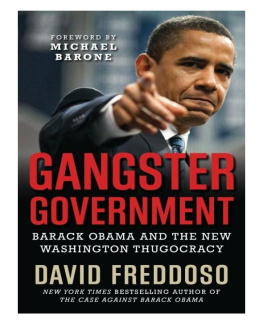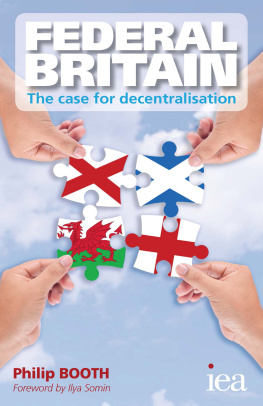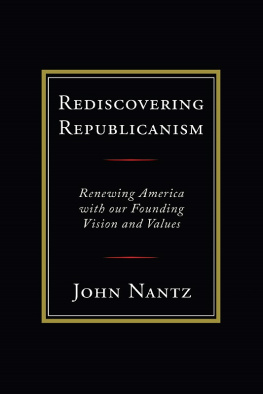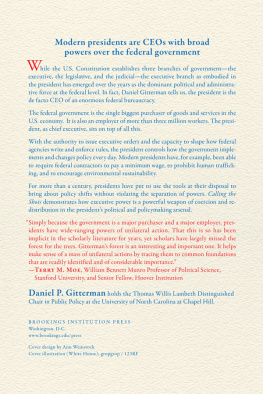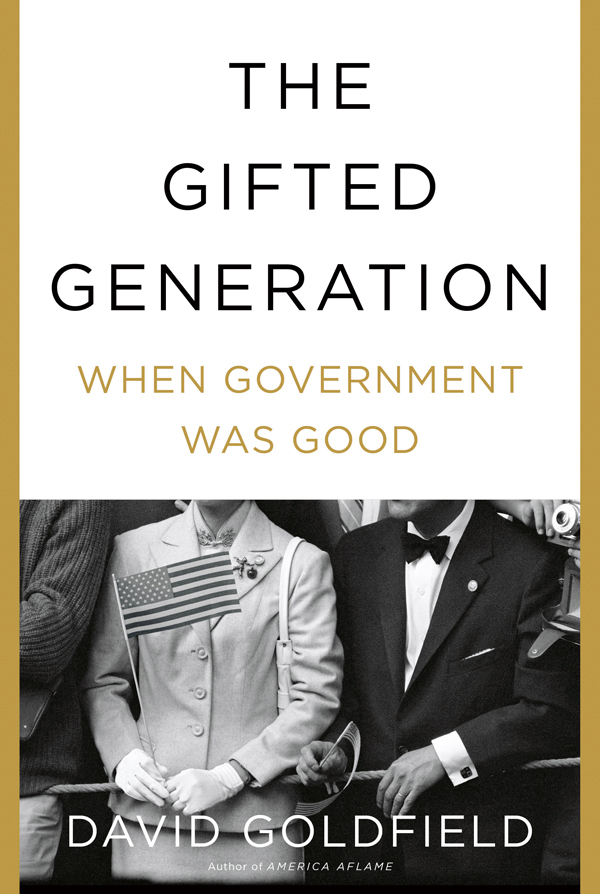Contents
Guide
Pagebreaks of the print version


For Abigail Sofia
BY THE SAME AUTHOR
The American Journey: A History of the United States
America Aflame: How the Civil War Created a Nation
Black, White, and Southern: Race Relations and Southern Culture, 1940 to the Present
Still Fighting the Civil War: The American South and Southern History
Twentieth-Century America
Region, Race, and Cities: Interpreting the Urban South


ONTENTS
This book is about the first boomersthe gifted generationborn into America in the 1940s and early 1950s, and the gifts they received from government. Thanks to federal policies that eased the way for their parents and made achievement more realizable for themselves, they were twice as likely as their parents to attend college, also aided by the federal government. The boom economy after World War II hummed along in great part because of their needs: food, clothing, education, electronics, toys, and housing and everything that could go into a home from air-conditioning units to dishwashers to vacuum cleaners. Their educational attainments fueled the transformation of the nations economy and spurred innovation and invention. The gifts kept on giving, not only to the gifted generation and their offspring, but also to the commonwealth.
What I call the commonwealth ideal defined governance in the United States during the first two decades after World War II. The ideal followed three basic principles of governance. First, government should enhance opportunities for all Americans. By benefiting individuals, public policy enhanced the commonwealth, in turn freeing its citizens to pursue their dreams. Second, the ideal charged government with the responsibility of balancing competing interestsindividuals, business and industry, and government itselfto benefit the nation. Third, the commonwealth ideal required obedience to the rule of law. The constitution, as interpreted by the federal judiciary, serves as the ultimate guarantor of equality before the law.
The ideal worked best when citizens believed the government kept their interests paramount. That was the case during the Great Depression and World War II. Once those crises ended, maintaining the commonwealth ideal became more difficult. Yet, for a remarkable twenty-year period following the war, the federal government did just that. Three presidentsHarry S. Truman, Dwight D. Eisenhower, and Lyndon B. Johnson, of similar family and geographic backgrounds, and each shaped by depression and war, expanded opportunities for a broad cross section of Americans, who, in turn, produced an era of prosperity and innovation. Public policy provided the gifts, and Americans, especially those of the gifted generation, ran with them.
Government responded to the changing circumstances of American life: the baby boom, an economy transitioning to a postindustrial society, and the growing awareness that significant segments of the populationthe poor, women, African Americans, and ethnic and religious minoritiesencountered too many obstacles on the journey toward reaching their full potential. Major government initiatives in education, research, civil rights, welfare, and immigration followed. These were not merely top-down measures. Consciousness-raising books on gender, the environment, and poverty spurred federal action as well. Key legislation involved collaborations among organizations, individual citizens, and the government. Their combined efforts, marshaled by forward-looking presidents, created a more equitable, inclusive, and educated America. Government was indeed good. It was hardly surprising that, by the mid-1960s, nearly 80 percent of Americans believed that to be the case, compared with less than 20 percent in 2015. The gifted generation was indeed blessed.
Generation is an amorphous concept. The two most common dictionary definitionsa group of individuals born and living contemporaneously or the span of time between the birth of parents and that of their offspringare, respectively, vague and fluid. The phrase
The baby boom actually began in the early 1940s, perhaps as soon as 1940, when births spiked. Popular magazines at the end of World War II were already touting an ongoing boom, which they traced back to 1941. By 1943, demographers were identifying a baby boom, citing that years record crop of babies, which followed high birthrates the previous three years. They attributed the rapid rise in the birth rate to the return of prosperity and the exigencies of war.
Recently, demographers have further challenged the Censuss 1946 starting year for the boom by questioning the usual explanation for the boom: prosperity and the pent-up demand for marriage and family. Prosperity was already evident by 1940 as the United States geared up for the war. Marriages spiked as well in the early 1940s, indicating the desire to begin a family before men went off to war. The boom, in other words, began well before 1946.
The first boomers were more than a cohort of a larger group. They were distinctive in numbers, experience, and impact. Thirty-two million babies were born during the 1940s, a 25 percent increase over the previous decade, the largest jump in American history to that point. Their influence on culture, the economy, and, ultimately, the political process announced the emergence of a new generation, a term I use with the caveats noted above, but also because the size and influence of the early boomers justify the designation.
The first wave of baby boomers had very different trajectories from the boomers born from the mid-1950s onward. The early boomers grew up in the 1950s, entered college at the beginning of the 1960s, and by the end of that decade embarked on a variety of careers, many of which did not exist at the time they were in high school. Journalists and demographers have abandoned any pretense that the early boomers and the late boomers shared anything except the Census definition of the boomer generation.
Journalist Richard
The unbounded belief carried by the early boomersthe gifted generationthat they would find not only meaningful work but also a fulfilling life began to recede by the 1970s. The early boomers took a prosperous economy for granted, which enabled them to pursue nothing less than the reformation of the nation in civil rights, immigration, medical care, gender equity, and environmental protection. Federal policies that expanded the economy and encouraged broader participation from heretofore marginalized groups helped to fuel both prosperity and confidence.
The federal role was crucial. The stories and successes of the gifted generationand of the nationare inseparable from the activist state. The New Deal had provided a model of how government could help a struggling population in the midst of the worst economic crisis in its history. But the New Deal was narrow in other respects, particularly with regard to race. The administrations of Truman, Eisenhower, and Johnson not only preserved the gains of the New Deal, but they also expanded its programs, added new ones, and welcomed the participation of people whose race, ethnic or religious backgrounds, and gender had restricted success for themselves and, therefore, for the nation.


